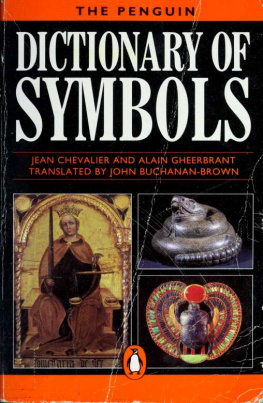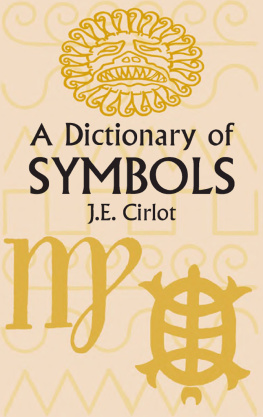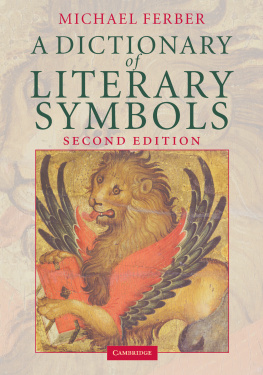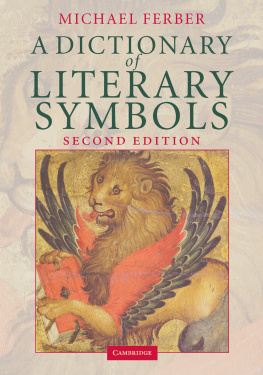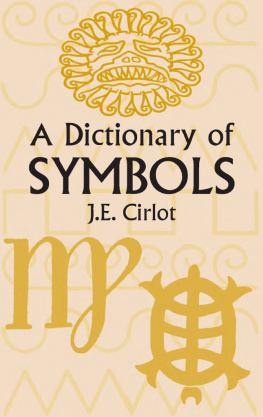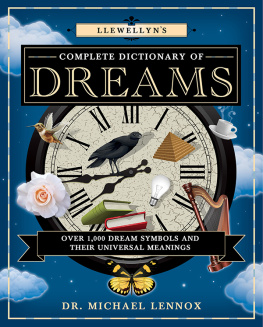This book made available by the Internet Archive.
Contributors
Andre Barbault (International Centre for Astrology)
Dominique Bayle (Librarian, Musee de l'Homme, Paris)
Yvonne Caroutch (Buddhism specialist)
Jean Chevalier, dec. 1993 (Philosopher and theologian)
Marguerite Chevalier (Teacher of classical literature)
Marie-Madeleine Davy (Head of research, CNRS, Paris)
Alain Gheerbrant (Travel writer and poet)
Pierre Grison (Art critic)
George Heintz (University of Strasbourg)
Le Roux-Guyonvarc'h (Director of Ogam, review of Celtic Studies)
Eva Meyerovich (Researcher, CNRS)
Mohammed Mokri (Professor, University of Tehran)
Henri Pfeiffer (Doctor of Medicine, Professor of Chromatology)
Pierre Prigent (University of Strasbourg, Professor of Protestant Theology)
Jacques de la Rocheterie (Psychotherapist)
Shibala Masumi (University of Kyoto, Japan)
Alexandre Volguine (Director, Les Cahiers astrologiques)
A
ablution See washing.
abracadabra This charm was used throughout the Middle Ages. 'One only had to write it down in the triangular pattern shown below and wear it round one's neck as a sort of phylactery or charm to be protected from various diseases and to be cured of fever': (PLAD)
ABRACADABRA ABRACADABR ABRACADAB ABRACADA ABRACAD ABRACA ABRAC ABRA ABR AB A
The word derives from the Hebrew abreg ad habra meaning 'strike dead with thy lightning'. In Hebrew it comprises nine letters. 'Placing aleph on the left side of the triangle - and its ninefold repetition - is the magical element' (MARA p. 48).
By arranging the letters in a reverse triangle, the celestial energies which the charm claims to entrap are directed downwards. Accordingly, the figure should be seen three-dimensionally as a funnel. The magic letters slanting down from the wide mouth to the narrow spout comprise the lines of force of a mighty whirlwind. Woe betide the powers of evil which it strikes since they will vanish for ever from the world above into the abyss from which there is no return.
In this sense, the charm, abracadabra, was a response to those same fears which inspired the invention of the amulet, charm or pentacle. It is only one of the many charms based upon a very ancient symbolism and it has been compared with one of the names of Mithras, the Sun-god and saviour who offers sacrifice.
Like amulets, talismans and pentacles, this charm seeks to give the individual a sense of protection through communication with the higher powers and with the mysterious laws which govern the universe.
Abraham The Old Testament patriarch came to the land of Canaan from Mesopotamia during the reign of King Hammurabi early in the second millennium, c. 1850 bc. He was a citizen of Ur of the Chaldees until God
ABSTINENCE
commanded him to leave his homeland and migrate to an unknown country, to which he would direct him stage by stage. When he reached Canaan, God told him that this was the land ordained for him and for his descendants. Biblical tradition has it that God removed him from a polytheistic society to make him guardian of a monotheistic religion. All the known world had fallen into idolatry, and Haran and Canaan were not exempt from the general corruption. Abraham, however, settled there as a stranger and his faith was preserved from contact with the customs and beliefs of its inhabitants. In reality, a constant struggle must have been needed to keep together the patriarch's family and his dependants. This perpetual reaction against the corrupt environment around it was to become one of the constant features of the history of Israel, and the characteristic of being 'a stranger in a strange land' was to preserve its divine vocation.
Abraham symbolizes the man chosen by God to safeguard the holy faith entrusted to him; the man blessed by God, who lavishes upon him promises of unnumbered descendants and incalculable wealth (the commonly accepted meaning of his name being 'Father of Multitudes'); the man predestined to a universal role as another Adam and the ancestor of the Messiah. Putting all his trust in God's word, he set out for an unknown country; as God promised, the childless husband of a barren wife became the ancestor of countless descendants; when God told him to sacrifice his only son, in apparent contradiction of those promises, Abraham was ready to obey until prevented by the angel. St Paul sums up this faith in a striking phrase, 'who against hope believed in hope'.
From the fact that Abraham is acknowledged as an ancestor by the three great monotheistic religions, Judaism, Christianity and Islam, he symbolizes, too, the spiritual bonds uniting Jew, Christian and Muslim in the brotherhood of Abraham.
On the psychological plane Abraham also symbolizes the need for a complete break away from one's habitual family, social and professional environment if one is to fulfil some extraordinary vocation and to exert an abnormal influence. All those destined to greatness have a penchant for risk and risk-taking. Faith in God can move mountains. Abraham's wisdom incited him to the folly (see simpleton) of taking a gamble on God.
abstinence The idea of purification by giving up the eating of meat is coupled in Christian tradition with that of penance and atonement. Blood symbolizes the sensual urges and is held to be the chief source of sin. Atonement for sin will therefore comprise abstinence from flesh, which is the mainspring of sin itself. Life will be focused upon the springs of spirituality alone, upon relating to the divine, the invisible. In its twofold aspect - purification and atonement - abstinence is seen as one of the ways to the inner life. In this, Christian tradition is at one with the traditions of the East.
In Japan, avoiding the sources of defilement is a means of purification which enables one to gain, as it were, an active purity. This method is the province of the priest rather than that of the lay person. It comprises the observance of certain taboos - never to touch a dead body, or to have contact with sickness or mourning. One must also stay at home avoiding all
ACACIA
exuberance, song or dance, in short all those activities conducive to defilement. All these practices symbolize the contrast between the visible and the invisible world, as well as the quest for the invisible through introspection.
abyss In both Greek and Latin 'abyss' indicates something which is bottomless, a world of endless depth or height. In apocryphal writings it is a blanket term for all formless states of being. It can be equally well applied to the shapeless Chaos preceding time as to the shadowy Hell of the end of the world. On the psychological plane it corresponds as much to the indeterminacy of childhood as to the undifferentiated state of death and the decomposition of the personality. But it may also indicate the ultimate act of unification, the so-called mystic marriage. The vertical lines are no longer those of descent, but of ascent. The abyss is as much topless as bottomless, one of joy and light as well as of misery and darkness. Historically, however, the sense of the abyss of Hell precedes that of Heaven.

